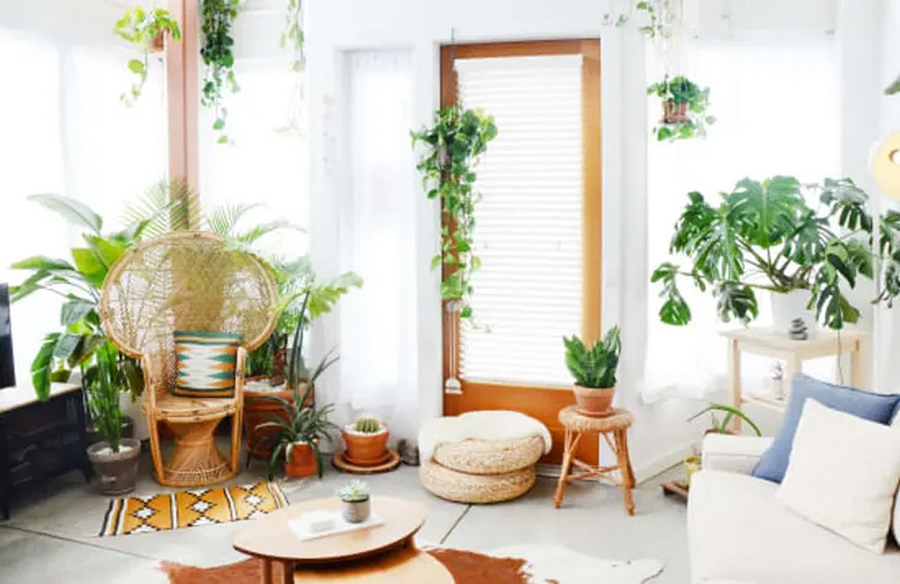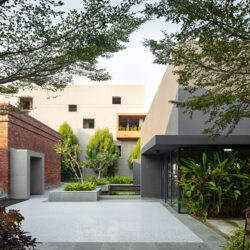Welcoming Winter with Radiant Plants
As winter casts its shorter days and longer nights, both you and your plants might be feeling the effects of reduced sunlight. Whether you’ve relocated your green companions indoors for the colder season or noticed signs of discontent in those once-happy sunlit spots, consider the remedy of grow lights to rejuvenate your plant haven. Shane Taylor, the expert behind Moss & Timber in St. George, Utah, shares valuable insights on navigating the realm of grow lights, offering four essential tips for buying and using these luminous aids.
Understanding the Light Dilemma
Taylor emphasizes the critical role of light in plant care, underscoring the need to ensure adequate illumination for sustained plant health. While watering reminders have become seamless with modern technology, providing ample light proves pivotal. Taylor, who has experimented extensively with various grow lights, acknowledges four crucial factors: directionality, intensity, color temperature, and spectrum breadth.
Exploring Grow Light Options
Before delving into Taylor’s tips, it’s essential to identify the right grow light for your indoor jungle. Three main options dominate the market: fluorescent grow lights (T5, T8, T12 tubes, and CFLs), LED (light-emitting diode) grow lights, and HID (high-intensity discharge) grow lights. Each type comes with its advantages and considerations.
Fluorescent Grow Lights: Though less popular than LEDs and HIDs, these lights offer a cost-effective option, particularly for small-scale plant setups. Suitable for supplemental light, they prove beneficial for starting seeds or cultivating herbs.
LED Grow Lights: Preferred by many for their energy efficiency, minimal heat emission, and prolonged lifespan, LED grow lights allow flexibility in adjusting light hues according to plant needs. Easily accessible at retailers like Home Depot, they offer tailored options for various plant requirements.
HID Grow Lights: Renowned for their brightness and effectiveness, HID grow lights may seem excessive for the average houseplant enthusiast. Taylor stresses that these intense lights are unnecessary for most indoor plants, emphasizing that houseplants like fiddle leaf figs do not require HID lights.
Pro Tips for Grow Light Success
Maximizing Light Exposure
Taylor advises optimizing light exposure by selecting LED spotlights or floodlights instead of omnidirectional bulbs. The directionality of light significantly influences its effectiveness, ensuring that your plants receive the intended light intensity.
Adjusting Light Intensity
Understanding the link between light intensity and distance, Taylor highlights the importance of adjusting light proximity based on plant needs. Tailor your setup to accommodate plants with varying light requirements, utilizing high-intensity bulbs for light-demanding species and placing them closer, while maintaining a greater distance for low-light plants.
Choosing Sun-Mimicking Bulbs
For a balanced light spectrum closely resembling natural sunlight, Taylor recommends fluorescent or traditional bulbs. These options often surpass LEDs in spectrum coverage. When scrutinizing bulb information, look for a Color Rendering Index (CRI) close to 100 and opt for bulbs labeled “daylight” or “sunlight” in the 4500 to 6500 Kelvin range.
Emulating Natural Light Timing
Fine-tune the duration of light exposure based on intensity and plant needs. While higher intensity compensates for shorter durations, Taylor suggests extending light periods (12 to 16 hours) for lower-intensity bulbs. Emulate natural day-night cycles by allowing your plants a break from grow lights during the night, fostering a more authentic environment.
Crafting a Stylish Plant Paradise
In concluding thoughts, Taylor addresses the aesthetic concerns associated with grow lights. Contrary to standard aluminum fixtures, there are stylish alternatives for incorporating grow lights seamlessly into your décor. Specific grow light bulbs fit standard outlets, allowing you to blend functionality and style. Transform a decorative floor or table lamp into a chic growing setup by outfitting it with the right bulb and employing a timer or smart plug for automatic on-off cycles.
Embarking on a journey with grow lights demands a degree of experimentation and intuition. Start with a few lights, play with distances, and observe your plants’ responses. With the right blend of light, care, and aesthetics, you can cultivate a radiant indoor jungle that flourishes even in the depths of winter.



















